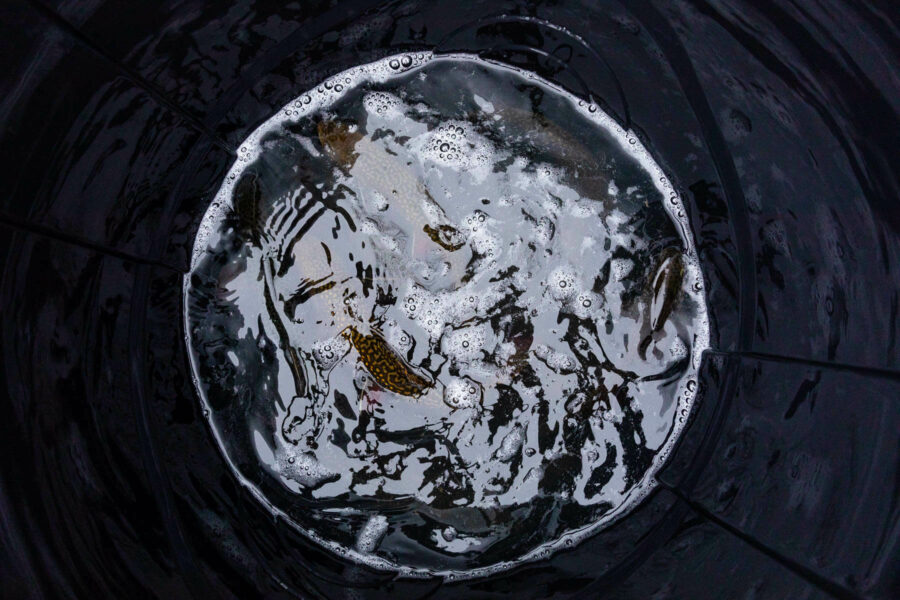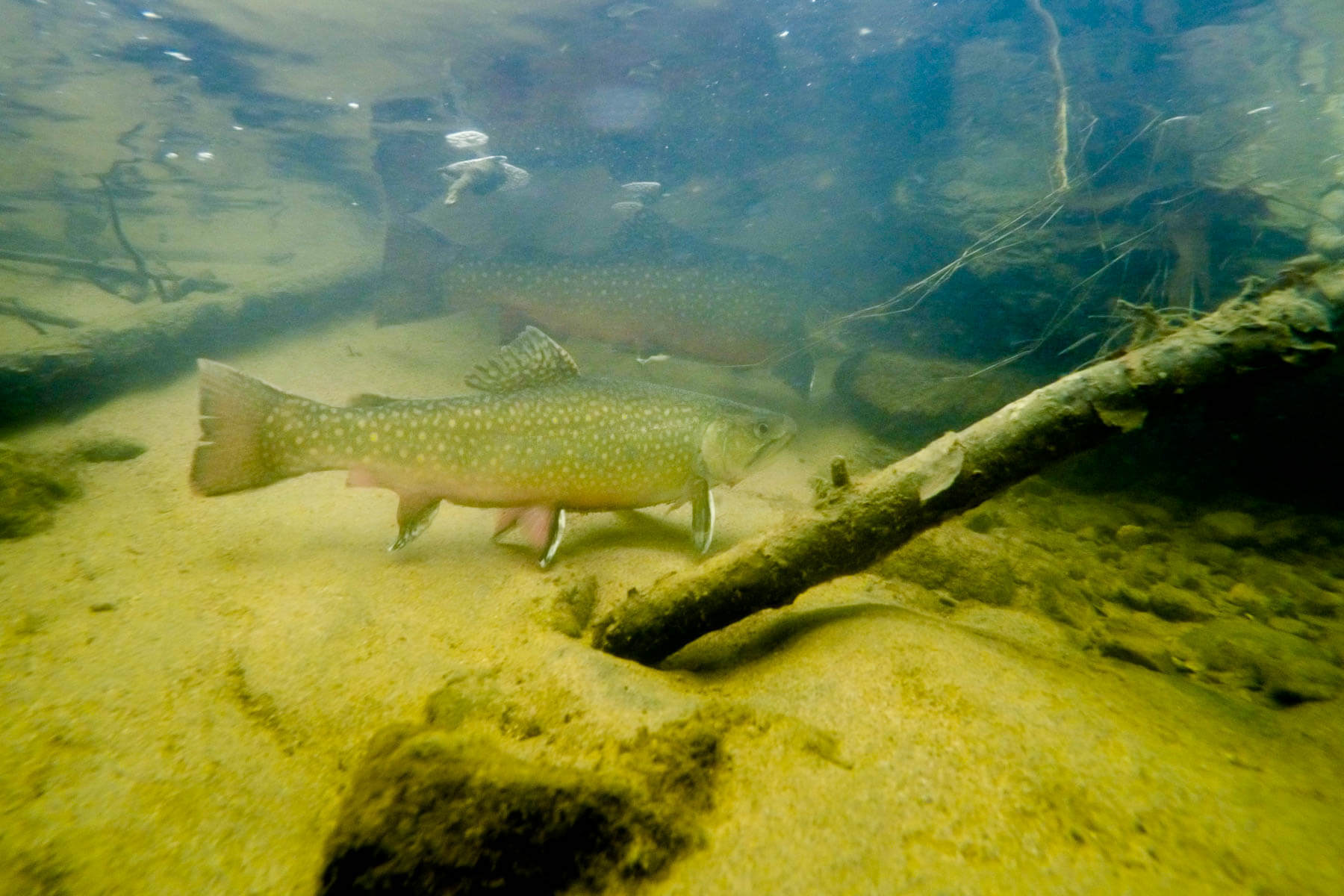Restoration turns back the clock on a trout stream

Brook trout haven’t had an easy time in Virginia, despite their status as the official state fish. The species once dominated freshwater up and down the commonwealth, but is now mostly relegated to headwater streams, where it can still find the cold, clean water needed to survive.
With some promising exceptions, brook trout in northern Virginia are limited to the largely undeveloped region surrounding Shenandoah National Park. But a restoration effort on private land is seeking to re-establish the species in a stream in the northwest corner of Loudoun County, where brook trout haven’t lived in perhaps over a century.
Joe Bane’s family has owned land along Piney Run, which flows directly into the Potomac River, since the early 1800s—well before John Brown’s infamous raid at Harpers Ferry, West Virginia, barely a mile away. Today, Bane and his wife Tamara operate Loudoun Mitigation Bank, LLC, which serves to design and implement measures to improve water quality and habitat. Bane has used his company to turn back the clock on his family’s property—not only attempting to bring back brook trout but a range of wildlife.
“During my lifetime it’s gone from no deer, no turkeys, absolutely no bears,” Bane said. “And everything is back in great numbers.”
In 2006, he protected the property permanently with conservation easements through the Northern Virginia Conservation Trust, so his children and future generations will see it continue to improve.
.jpg)
Last year, a range of wildlife eagerly mowed down the clover and turnips he planted along Piney Run, and even river otters are returning after a long absence.
An avid hunter as well as angler, Bane sees opportunities for more conservation efforts to be supported by the “hook and bullet” community.
“Hunters and fishermen form a large portion of the taxpaying citizens who want to see forests, waters and lands protected for all wildlife and fish,” Bane said. “I personally know guys who will pay a lot of money to just catch, photo and release a trophy fish.”
But bringing brook trout back to Piney Run posed a greater challenge due to the stream’s history. Bane said the area was settled in the 1700s and that Piney Run soon began to degrade due to livestock in its 10,000-acre watershed. When he was a child, Bane could at least catch fish that found their way into the stream from a small lake that a neighbor continually stocked. But when he was in college, about 35 years ago, the dam holding back the lake breached.
“We saw bigger floods afterward with more sediment,” Bane said. With more erosion and little habitat, the fish had almost disappeared. So in recent years, Bane pursued stream restoration in order to get fish back in the stream for his children, just like when he was younger.
“We’re trying to put trout back in here for the first time in probably 200 years,” Bane said.
To recreate optimal conditions for trout, Bane restored roughly 5,000 feet of Piney Run, incorporating various rocky structures that speed up water flow and oxygenate the water, like cross vanes and J hooks.
In early January, after obtaining permission from the Virginia Department of Wildlife Resources, Bane watched a truck carrying 400 fish roll up to his property. The delivery from Laurel Hill Trout Farms included both native brook trout as well as brown trout—a non-native but hardier species that can handle slightly warmer temperatures.
Aided by his brother James and his 20-year-old son Cameron, Bane helped transport fish to the stream in large garbage cans.
“The big question is whether the brook trout will be able to remain,” Cameron said, following a rough path to the stream on an off-road golf cart.
Water quality monitoring revealed that temperatures in the restored stretch of Piney Run are now tantalizingly close to what the brook trout can tolerate—just a half degree above the survivable range. But even if the brook trout don’t persist after repeated stockings, the brown trout are likely to survive.

Conditions will continue to improve as Bane continues his plans, which include restoring additional miles of the stream and planting endangered trees that will better shade the restored stream.
“I’m going to pay a lot of money to put several hundred [American] chestnut trees back in here,” Bane said. “We’re hopeful that the chestnut trees will thrive in here.”
If conditions don’t quite line up for brook trout in the restored stretch of Piney Run, a more pristine stretch just downstream may become a refuge for them until the restored section has fully improved. In that part, Piney Run drops quickly through a steep, shady canyon before it reaches the Potomac.
“It’s faster, it has more oxygen and it stays colder,” Bane said.
He added that since stream restoration is still a relatively new science, it remains to be seen whether adding more structures will continue to improve the water quality in Piney Run. He’s installed long-term stations to assess water conditions, but he said it’s ultimately up to the fish to tell him whether Piney Run has recovered—they’re their own monitors of water quality.
“It’s really weird, that when you get more oxygen into a water body, all the animals seem to find it almost immediately.” Bane said, standing on the bank of Piney Run, the rushing sound of its restored riffles blending into his words. "Amazing.”
The Chesapeake Bay Program tracks brook trout as an outcome of the 2014 Chesapeake Bay Watershed Agreement. Learn more at ChesapeakeProgress.

Comments
great story, pics & video -
Thank you!
Your comment has been received. Before it can be published, the comment will be reviewed by our team to ensure it adheres with our rules of engagement.
Back to recent stories